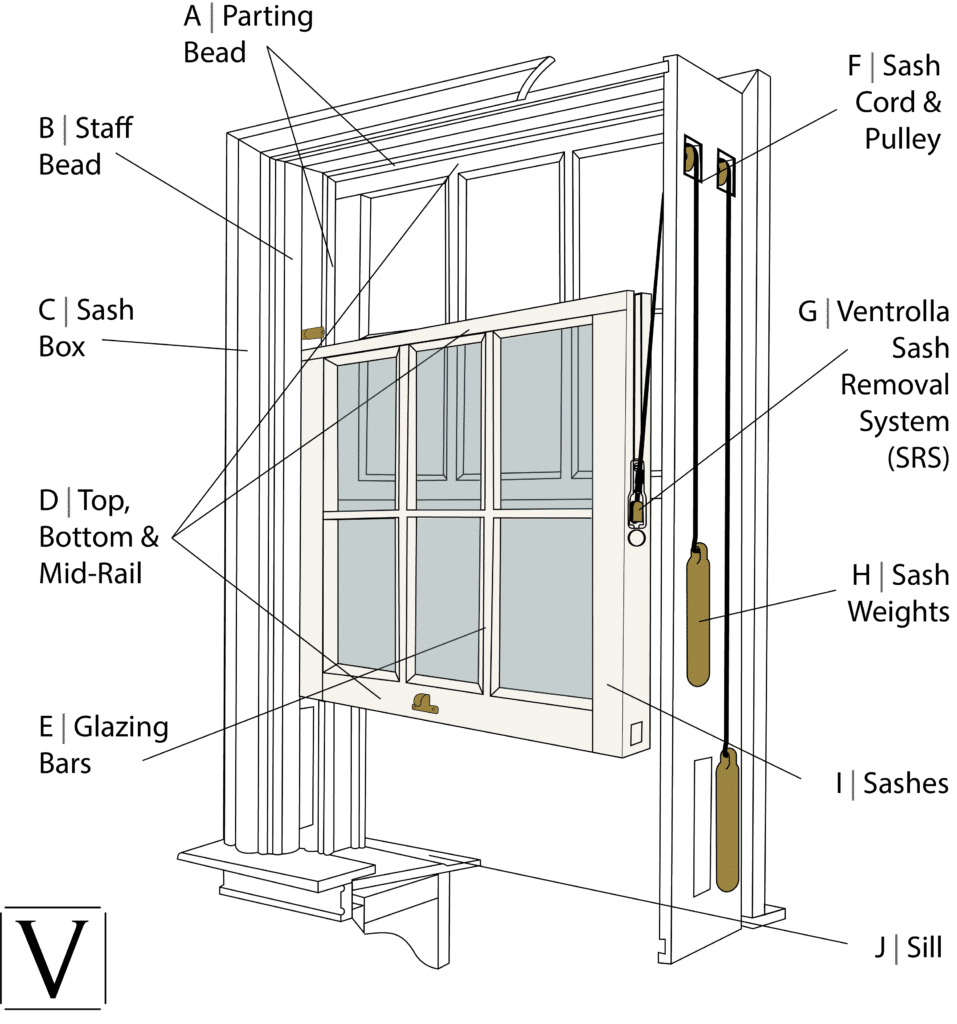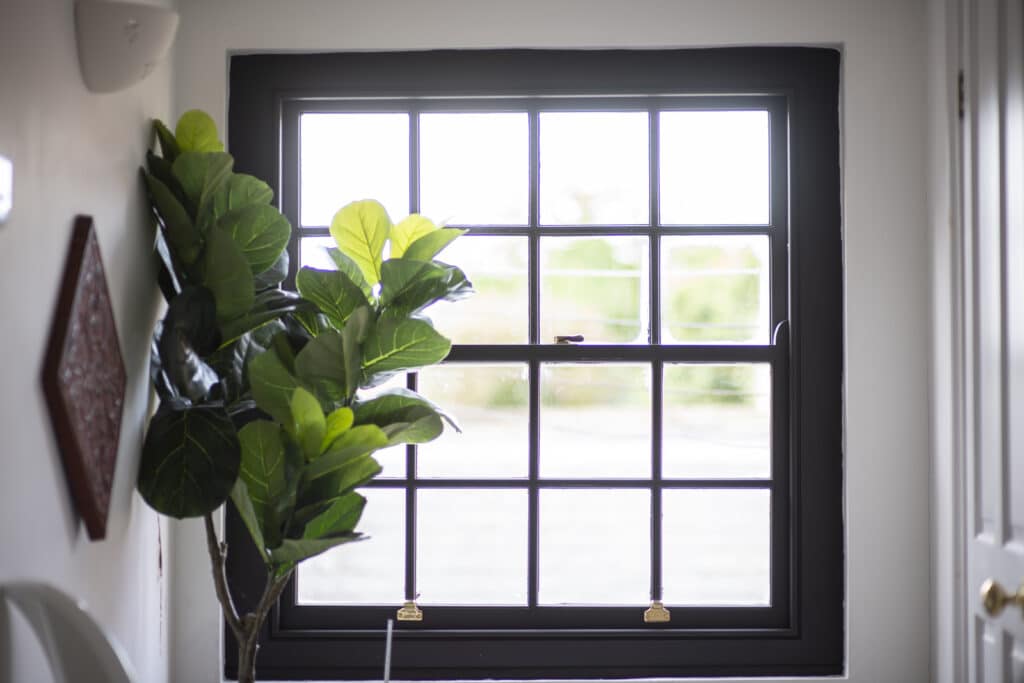The Anatomy Of Sash Windows
The Anatomy of Sash Windows
 Where do sash windows originate from?
Where do sash windows originate from?
Sash windows have never been more popular, and are continually rated as one of the top desirable features in period properties. But where do they originate? Contrary to popular belief, the first sliding box sashes were actually found in 17th century London. The design comes from a time when streets in London were narrow, and windows opening outwards could have touched buildings opposite or prevented a clear path outside.
What parts are sash windows made up from?
Now, let’s take a look at how they’re constructed.
A sash window is made up of a selection of individual parts – some moving, some fixed. Each part is not only practical and functional but also adds to the unique design, that has made sash windows so enduringly popular.

A | Parting Bead
These long, narrow strips sit between the upper and lower sashes, enabling them to slide past one another. This is one of the areas we install our unique draught-proofing system to eliminate draughts, rattles, leaks, heat loss & dust ingress.
B | Staff Bead
This is the trim that frames your sash box on the interior side. It keeps the sashes in place. Removing it, if you want to take the sash out, can cause damage, so it’s a good idea to call on specialists rather than attempting it yourself.
C | Sash Box
The sash window box frame is the overall window frame that surrounds the window opening and it incorporates the window sill externally.
D | Top, Bottom & Mid-Rail
The rails are the horizontal sections of timber that make up each sash frame. Each sash has a top and a bottom rail, and where they meet in the middle of the window is known as the mid-rail. The bottom rail of the bottom sash is usually the most vulnerable to external water & weather damage, and it’s where we often find signs of rot.
E | Glazing Bars
Mainly a feature in Georgian homes, glazing bars are the small, detailed pieces of timber that span the glazed sash, both horizontally and vertically. Sash windows with glazing bars come in various configurations, and therefore we would refer to Georgian windows by their style and number of panes of glass, such as ‘9 over 9’ or ‘6 over 6’. A common Victorian sash doesn’t have glazing bars, and instead has one large pane of glass in each sash, so is often referred to as a ‘1 over 1’.
F | Sash Cord & Pulley
Sash cords, commonly made from braided cotton or jute with a waxed finish, are fed up and over the pulley and enable the sash to open and close smoothly.
G | Ventrolla Sash Removal System (SRS)
To help with future maintenance (cleaning & painting), Ventrolla created a unique Sash Removal System when Ventrolla first established. It sits descretely in the side of each sash, and stops the sash cord from breaking free from your sashes (causing the sash weights to drop into the sash box). The system helps our customers’ take out their sashes, internally, should they need to, with minimal disruption to their home. You can view a helpful video of our SRS system on our YouTube channel.
H | Sash Weights
Often made of cast iron or lead and hidden within the box at the side of the pulley system, sash weights are attached to the sash cord, to counterbalance each sash as it moves.
I | Sashes
In a traditional sash window, there will be one or more moveable sashes (single or double hung), that sit inside the window ‘case’, sliding up and down to open and close the window. Early vertical sashes would have been supported by blocks of wood and holes with pegs, before the counterbalanced mechanism was designed in the late seventeenth century.
J | Sill
You’ll most probably know, but the window sill sits at the bottom of the sash box externally, and gets the brunt of the weather. This means that this is the key area for rot to set in, which in turn, travels up the timber in your window & into the sashes themselves. When we renovate a timber window, we treat all rotten timbers or replace them fully with a brand new sill and lower box frame.

Need sash window repair or restoration expertise?
The construction of timber sash windows means that individual parts can be replaced or repaired when necessary. And if you’re having problems with your sash windows, it can help to visualise how your window is made up to work out where the issue lies.
However, getting at the parts of a sash window traditionally isn’t always easy. So timber window specialists, Ventrolla, have designed a Sash Removal System which is fitted as standard when any repairs take place, or integrated into reproduction sash windows. This neatly concealed system makes it easy to remove a sash so maintenance and painting can take place effortlessly.
If you would like to book a free, no-obligation survey of your sash windows, get in touch with Ventrolla today
